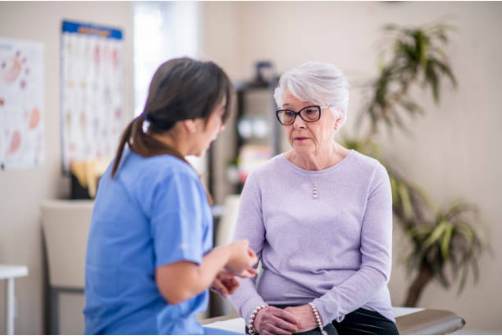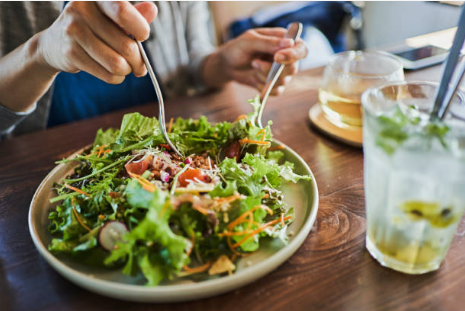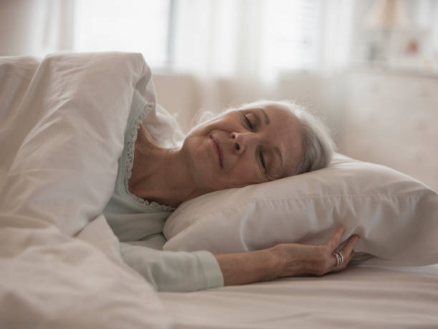Diabetes educator shares FOUR HACKS to help you lower your blood sugar level — find out more here!
By
- Replies 8
Diabetes is one of the most prevalent diseases among elderly Australians.
A report published by the Australian Institute of Health and Welfare (AIHW) in 2020 reported that in the period between 2017 and 2018, almost 1 in 5, which is19% of Australians aged 75 and over suffer from one type of diabetes — this is 1.9 times higher than Aussies aged between 55 and 64 years old.
Additionally, it was reported that the likelihood to develop the disease increases with age as our bodies tend to produce less insulin as we get older.

Seniors are vulnerable to contracting diabetes as our bodies tend to produce less insulin as we age. Credit: Getty Images.
For our members who are diagnosed diabetics and are working with their doctor to help manage their condition, you might find some of the below tips helpful, although please do not take the below tips as medical advice. You should always speak to your doctor to work out what is best for you and your condition first!
Registered dietitian and certified diabetes educator Diana has gone viral on TikTok after she shared four hacks on how to lower your blood sugar levels.
Credit: TikTok/@ReversingT2D
1. Move for at least 10 minutes after your meals
The first tip that she shared is to move for at least 10 minutes after your meals.
She explains: "Our muscles use glucose for energy."
"So, if you experience some blood sugar spikes after eating a meal, one of the best ways to bring them down is to move your muscles."
The diabetes educator then suggests that you can do any type of movement, including walking, dancing, cleaning the house, climbing up and down the stairs, and more.
She also emphasises that as long as you get your muscles moving, it will help you lower your blood sugar levels.
2. Eat your veggies first
Diana highly suggests eating your veggies first during your meals as it results in a "much smaller blood sugar spike".
The nutritionist explains: "Eating your veggies first in your meal or having a salad as an appetiser dramatically slows down the absorption of glucose from the rest of your meal."

The diabetes educator advised that you should eat your veggies first before moving on to other dishes during a meal. Credit: Getty Images.
3. Eat sweets last
While eating lots of sweets is not advisable for those who are suffering from type 2 diabetes, the nutritionist acknowledges that sweet cravings cannot be prevented.
"If you have something sweet, have it at the end of your meal and not on an empty stomach," she says.
However, she emphasises never to eat sweets on an empty stomach as it is "more likely to lead to a blood sugar roller coaster".
4. Sleep 7 to 9 hours each night
Diana explains: "When we don't sleep well, our blood sugar spikes will be greater for the same exact foods."

Sleeping 7 to 9 hours is a must, according to the nutritionist. Credit: Getty Images.
The video gained traction on TikTok amassing more than 1.4 million views and more than 60,000 likes.
One woman wrote: "You have given us regular people so much info thank you a bunch!"
"I never knew the salad thing! That's a great idea," another added.
"I usually have a salad with something like soup or a sandwich."
Other users suggested their hack to minimise their blood sugar spikes.
One person wrote: "Drinking apple cider vinegar 30 min before eating is supposed to help as per YouTube."
To which Diana replied with: "Yes! That is also a great hack!"
We like to reiterate that while these hacks are provided by a medical expert, we encourage our members to speak to their doctor before making any dietary changes, as what is best for you may not be what is best for someone else!
A report published by the Australian Institute of Health and Welfare (AIHW) in 2020 reported that in the period between 2017 and 2018, almost 1 in 5, which is19% of Australians aged 75 and over suffer from one type of diabetes — this is 1.9 times higher than Aussies aged between 55 and 64 years old.
Additionally, it was reported that the likelihood to develop the disease increases with age as our bodies tend to produce less insulin as we get older.
Seniors are vulnerable to contracting diabetes as our bodies tend to produce less insulin as we age. Credit: Getty Images.
For our members who are diagnosed diabetics and are working with their doctor to help manage their condition, you might find some of the below tips helpful, although please do not take the below tips as medical advice. You should always speak to your doctor to work out what is best for you and your condition first!
Registered dietitian and certified diabetes educator Diana has gone viral on TikTok after she shared four hacks on how to lower your blood sugar levels.
Credit: TikTok/@ReversingT2D
1. Move for at least 10 minutes after your meals
The first tip that she shared is to move for at least 10 minutes after your meals.
She explains: "Our muscles use glucose for energy."
"So, if you experience some blood sugar spikes after eating a meal, one of the best ways to bring them down is to move your muscles."
The diabetes educator then suggests that you can do any type of movement, including walking, dancing, cleaning the house, climbing up and down the stairs, and more.
She also emphasises that as long as you get your muscles moving, it will help you lower your blood sugar levels.
2. Eat your veggies first
Diana highly suggests eating your veggies first during your meals as it results in a "much smaller blood sugar spike".
The nutritionist explains: "Eating your veggies first in your meal or having a salad as an appetiser dramatically slows down the absorption of glucose from the rest of your meal."
The diabetes educator advised that you should eat your veggies first before moving on to other dishes during a meal. Credit: Getty Images.
3. Eat sweets last
While eating lots of sweets is not advisable for those who are suffering from type 2 diabetes, the nutritionist acknowledges that sweet cravings cannot be prevented.
"If you have something sweet, have it at the end of your meal and not on an empty stomach," she says.
However, she emphasises never to eat sweets on an empty stomach as it is "more likely to lead to a blood sugar roller coaster".
4. Sleep 7 to 9 hours each night
Diana explains: "When we don't sleep well, our blood sugar spikes will be greater for the same exact foods."
Sleeping 7 to 9 hours is a must, according to the nutritionist. Credit: Getty Images.
The video gained traction on TikTok amassing more than 1.4 million views and more than 60,000 likes.
One woman wrote: "You have given us regular people so much info thank you a bunch!"
"I never knew the salad thing! That's a great idea," another added.
"I usually have a salad with something like soup or a sandwich."
Other users suggested their hack to minimise their blood sugar spikes.
One person wrote: "Drinking apple cider vinegar 30 min before eating is supposed to help as per YouTube."
To which Diana replied with: "Yes! That is also a great hack!"
We like to reiterate that while these hacks are provided by a medical expert, we encourage our members to speak to their doctor before making any dietary changes, as what is best for you may not be what is best for someone else!







